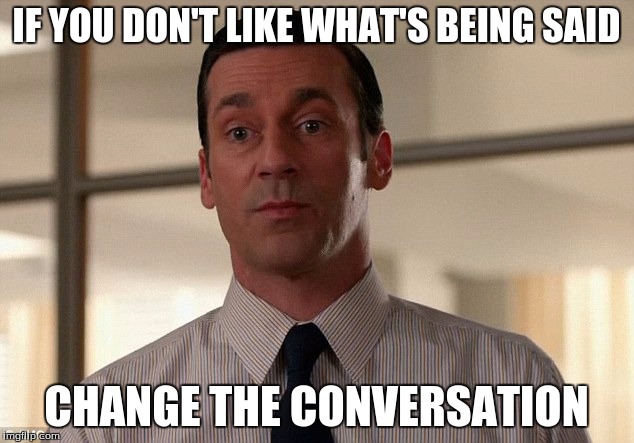Up until Don Draper and Sterling Cooper started gracing our airwaves a lot of people did not understand the distinction between sales and marketing. Many still don’t. It is understandable as to outsiders they both have the same purpose: to get people to buy the product. Even in small companies where you might not have separate sales and marketing teams it can be confusing. As your company grows (or you find yourself working in one) you will find that the distinction exists and often for a good reason.
As an underdog entrepreneur it is important to make the distinction between sales and marketing early on so that when you do start hiring people for specific roles in those departments they are stepping into structure that already exists and build upon what has already been done instead of reinventing the wheel. So this is written with that in mind.
Sales -> Marketing
Sales gives marketing one crucial thing it does not have which is the customer’s voice. Sales talks to customers and potential customers all day every day. They hear what problems people face, what they are looking for in terms of solutions, and what it will take for them to pick your solution. In short, what sales can give marketing is information:
- Any product questions
- Most common objections
- Current solutions/providers that customers use
- Words, language, jargon that customers use
Additionally sales can, and might be already, monitoring their leads’ blogs, social media, and any news about them (you can use Google Alerts to do this for free). When they learn about problems that the leads face they relay those to marketing. If it is deemed that a decent number of customers would have those same problems then there might be a good opportunity for a piece of content.

Marketing -> Sales
The main thing that the marketing department can deliver to sales is content that helps them move prospects further down the funnel. This content can be product information pieces, materials that speak directly to customer objections, and industry/market data and projections. I think those last ones are particularly good for for what I call conversation pieces and can be turned into SlideShares that can be shared on LinkedIn and that sales can send to prospects that have fallen out of the funnel in order restart the conversation and bring them back in.
Here are some ideas for materials marketing can create:
- Whitepapers
- Ebooks
- Slideshares
- Infographics
Analytics
It will take time but be sure to set up tracking so you know what each prospect has been sent and by who. This will help you cull the content that does not convert and double down on the content that does.
Customization
There will be some pieces that will be more effective if they can be customized with the prospect’s name and data. Content that has projections or comparisons to industry averages are examples of those. In those cases if possible give sales the content in a format that they can customize themselves.
Segmentation
The more data that is shared between sales and marketing the better each department will be at segmenting customers. That will allow more targeted communication and content which will result in more leads for marketing and more customers for sales.
Continuous Cross-Pollination
Without veering too far down the lane towards Office Space and TPS reports, it might be beneficial to have a set list of deliverables for sales to bring to marketing for a monthly meeting between the two departments. Those might include some of the things that we just discussed. Additionally once a quarter have marketing sit in on a sales meeting and vice versa. That sort of cross pollination can lead the kind of initiatives that deliver the big results you crave.

